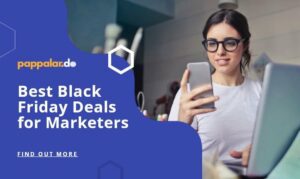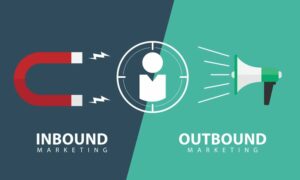How to Get Started with Digital Advertising
There are a lot of moving parts when it comes to Digital Advertising. Digital advertising can be one of the most effective way to attract your ideal clients to your website (the first step of a good Inbound Marketing campaign). Most people think Facebook or Google advertising but it can encapsulate a whole lot more, and it can get complex in a hurry. We’d like to write a few quick suggestions to how you can start simple, find success, and scale up.
Before we get into the suggestions, I’d like to point out that a lot of people lose a lot of money in digital advertising because they haven’t properly set up their process that runs from the time someone sees an ad until they become a new customer. Digital advertising as an awareness-only strategy is probably not the best idea. To be successful, you’ll need to have a full funnel set up to capture leads and a process in place to convert those leads into customers.
Here are a few questions to ask when getting started with Digital Advertising.
- Do people know they need your services, or do you need to introduce people to your services?
- Does your persona have clearly defined demographic attributes, like a job title, city of residence, or interest?
- Are your services or products Business to Consumer (B2C) or Business to Business (B2B)?
Let’s look at how the answers to each of these questions can be used to determine where you should advertise, how you should structure your campaign, and how you can make money and scale up to increase revenue. Let’s get started!
#1. Do people know they need your services?
If you’re selling a product that people know that they need, like running shoes, you have a few more options than if you’re selling a brand new product that nobody has heard of.
If you’re selling a product that people know they need, paid search can be a really good place to start. While there are a couple of platforms that you could choose from, Google Adwords is typically the place to start while you’re building your paid search campaign.
You’ll want to focus your keyword research at first on keywords that describe your exact service or product and indicate that the searcher is ready to take an action. If you sell beach balls, you need to buy the term “beach balls” and “best beach balls” and stay away, for now, from terms like “fun stuff to do at the beach”.
While “fun stuff to do at the beach” might eventually become a customer, you’ll have some work ahead of you because they’re still in the Discovery phase of their buyer’s journey. As your campaign matures and you’re bringing in revenue, then go after those keywords higher up in the funnel. But your best bet at being profitable quickly is to buy keywords that indicate action.
Structure your ads so that they reflect the search query, and write a description that completes the inner dialogue that is happening inside your users mind. When they click the ad, direct them to a landing page that completes the thought and provides an action for them to take. Your landing page should not have any distractions like navigation or links. Depending on the type of service or product that you offer, a workflow should kick off when they complete the action on the landing page. The keyword you buy, the ad, the landing pages, and any emails should all provide value and drive the user toward becoming a customer.
#2. Does your persona have clearly defined demographic attributes?
If your persona has clearly defined attributes, like a job title, geographic area, or interest, then it’s probably a good idea to consider Facebook advertising. Because Facebook has some of the highest quality information on their users, you can use this information to market strategically to them. This is useful whether you are selling a product or service that people are familiar with (like the beach ball example above), or if you are introducing a brand new product or service.
When you go to create a Facebook ad, there are a ton of attributes that you can use to create hyper-targeted audiences. If your persona is a female, age 40-55, from Georgia, with 2 teenage kids who takes vacations at the beach, you can find exactly the people who meet those attributes and show your ads to them.
If people are already familiar with your product, you’ll want to use the opportunity to highlight a summer sale or begin a case study of how your service helped save someone time, money, or heartache. If people are not, then you’ll need to tell a story that illustrates that your users have a problem that they may not even be fully aware of yet. Then you’re in a position to suggest a solution.
If you’re an e-Commerce business, then your conversion is to get that first sale. If you’re focused on lead generation, then you should be directing users to a landing page and giving them something of great value (like an ebook or a checklist) in exchange for their email address.
#3. Are your services or products Business to Consumer (B2C) or Business to Business (B2B)?
If you are a B2C business, then a combination of Google AdWords and Facebook ads is probably a great place to start with your digital adverting. If you’re selling services to other companies, then you may want to consider two other alternatives.
In addition to Facebook Ads, you may want to consider Facebook Lead Ads. These don’t take people out of the Facebook app. Instead, it shows the content of the ad and pre-populates a form based on the information that Facebook already has about that person. This eliminates friction that might cause people to disengage with you before they convert to a lead. And with their info already filled in, it makes it very easy for the person to just hit Submit and get on with their day.
One note on Facebook Lead Ads: You do need to make sure that you have a well-thought out plan for following up with these people. Since they’re not visiting your site, they probably aren’t going to have as much familiarity with your brand.
The other alternative that you should consider as a B2B business is LinkedIn advertising. LinkedIn is undoubtedly the best place to connect with other business professionals, and it’s much less crowded than Facebook. Running LinkedIn text ads can be a budget-friendly way to drive people to your site and increase conversions, while Sponsored Content can provide a great way to increase engagement with your ideal customers on LinkedIn.
Now, it’s your turn. What advertising strategies have you found to be successful? Let us know in the comments below!





